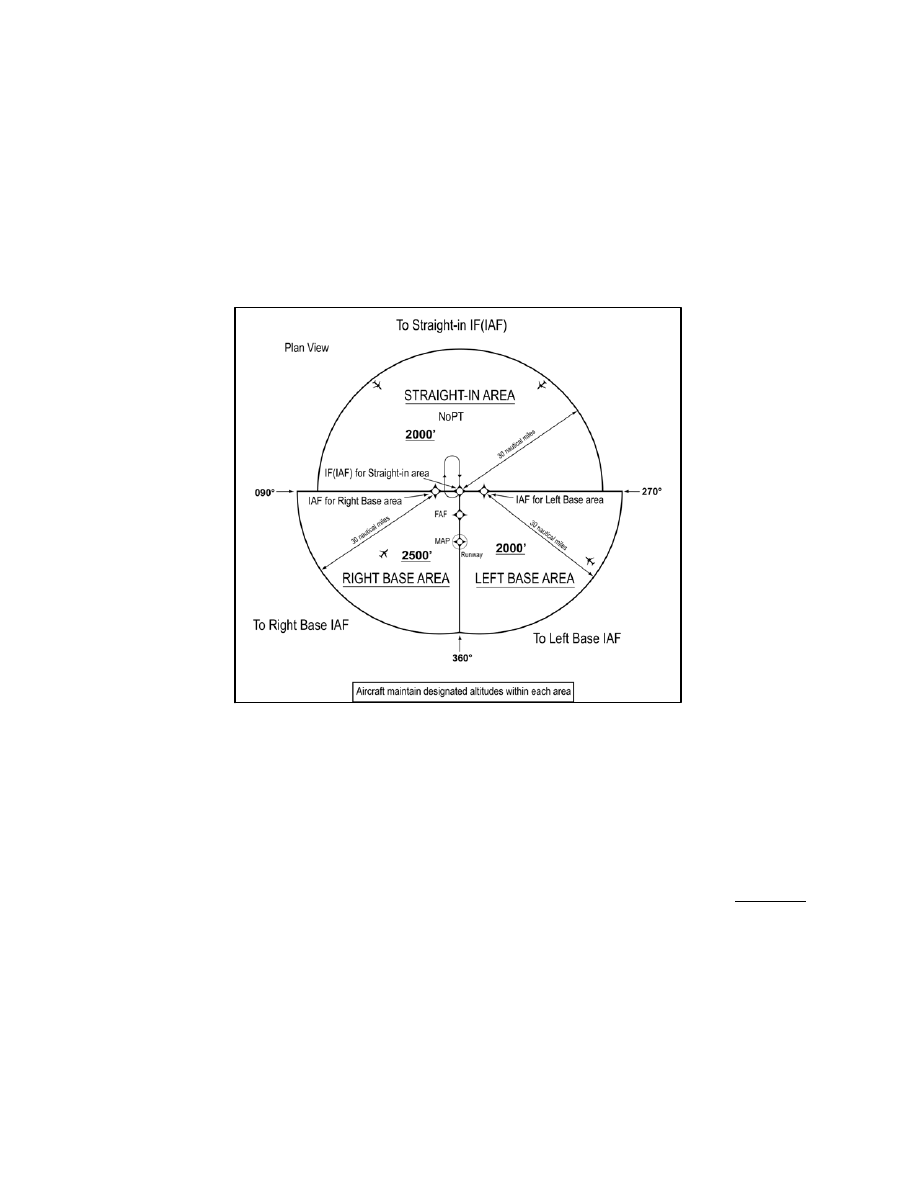
AIM
8/15/19
5
−
4
−
11
Arrival Procedures
3.
The standard TAA based on the “T” design
consists of three areas defined by the Initial Approach
Fix (IAF) legs and the intermediate segment course
beginning at the IF/IAF. These areas are called the
straight
−
in, left
−
base, and right
−
base areas. (See
FIG 5
−
4
−
4). TAA area lateral boundaries are
identified by magnetic courses TO the IF/IAF. The
straight
−
in area can be further divided into
pie
−
shaped sectors with the boundaries identified by
magnetic courses TO the (IF/ IAF), and may contain
stepdown sections defined by arcs based on RNAV
distances from the IF/IAF. (See FIG 5
−
4
−
5). The
right/left
−
base areas can only be subdivided using
arcs based on RNAV distances from the IAFs for
those areas.
FIG 5
−
4
−
4
TAA Area
4.
Entry from the terminal area onto the
procedure is normally accomplished via a no
procedure turn (NoPT) routing or via a course
reversal maneuver. The published procedure will be
annotated “NoPT” to indicate when the course
reversal is not authorized when flying within a
particular TAA sector. Otherwise, the pilot is
expected to execute the course reversal under the
provisions of 14 CFR Section 91.175. The pilot may
elect to use the course reversal pattern when it is not
required by the procedure, but must receive clearance
from air traffic control before beginning the
procedure.
(a)
ATC should not clear an aircraft to the left
base leg or right base leg IAF within a TAA at an
intercept angle exceeding 90 degrees. Pilots must not
execute the HILPT course reversal when the sector or
procedure segment is labeled “NoPT.”
(b)
ATC may clear aircraft direct to the fix
labeled IF/IAF if the course to the IF/IAF is within the
straight-in sector labeled “NoPT” and the intercept
angle does not exceed 90 degrees. Pilots are expected
to proceed direct to the IF/IAF and accomplish a
straight-in approach. Do not execute HILPT course
reversal. Pilots are also expected to fly the straight
−
in
approach when ATC provides radar vectors and
monitoring to the IF/IAF and issues a “straight-in”
approach clearance; otherwise, the pilot
is expected
to
execute the HILPT course reversal.
REFERENCE
−
AIM, Paragraph 5
−
4
−
6 , Approach Clearance
(c)
On rare occasions, ATC may clear the
aircraft for an approach at the airport without
specifying the approach procedure by name or by a
specific approach (for example, “cleared RNAV
Runway 34 approach”) without specifying a
particular IAF. In either case, the pilot should proceed